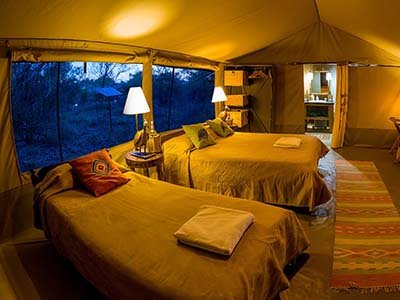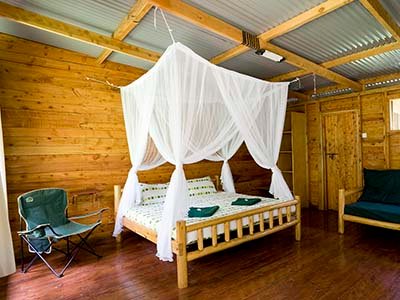Ngorongoro Conservation Area
Ngorongoro Conservation Area, with Ngorongoro Crater, is breathtaking at first sight.
Ngorongoro is a massive crater (collapsed volcano) that spans 250 square kilometres and is 600 meters deep. Over 20,000 big animals live in the crater alone, including some of Tanzania’s few surviving black rhinos. The rhinos emerge from the woodlands in the early morning mists, and their archaic forms stand out against the old crater walls. There are no fences or restrictions around the crater walls; animals are free to enter and exit the crater, but many remain for the abundant water and grazing available on the crater floor all year. The majority of the crater floor is covered in open grassland, which becomes golden with wildflowers in June.
Allowing both people and animals to live in harmony with one another is central to the conservation goals of the Ngorongoro Conservation Area. Traditional African pastoralists work with Tanzanian government agencies to protect the area’s wildlife and make sure visitors have a good time.
Flamingos and other water birds flock to the Makat soda lake, while predators lurk in the marsh, waiting to attack animals that come to drink from the river that feeds the lake. Swamps on the crater floor provide water and habitat for elephants and hippos, as well as a variety of smaller animals like frogs, snakes, and Serval cats.
Around Lake Makat, game viewing is extremely rewarding: huge animals such as gazelle and zebra come to drink, while herds of hippos sunbathe in the deep lakeside muck. The Maasai term for the magnificent yellow-barked acacia tree inspired the name of the Lerai Forest on the crater floor. Elephants often browse in the shelter of the forest during the noonday heat, emerging onto the open plains in the early morning and evening when the midday heat subsides.
Monkeys, leopards, baboons, and antelope such as bushbuck and waterbuck live on the crater floor’s sparse forest patches. For millions of years, humans and their distant predecessors have been a part of the Ngorongoro Crater’s landscape. The first indications of humanity in the Conservation Area may be found at Laetoli, where 3.6 million-year-old hominid footprints have been preserved in volcanic rock. The narrative continues in Olduvai Gorge, a river canyon dug 100 metres deep into the Serengeti Plains’ volcanic soil. The bones of creatures including hominids that lived and died around a tiny lake surrounded by grassy plains and woods are buried in the strata. These relics date back two million years.
Visitors may discover more about this intriguing narrative by visiting the site, where interpreters provide an enthralling on-site explanation of the gorge. The Maasai, who came some 200 years ago, are the most populous and recent occupants of the Ngorongoro region.
Many tourists are drawn to their great emphasis on ancient practices and attire. Approximately 42,000 Maasai pastoralists reside in Ngorongoro with their livestock, which includes cattle, sheep, and goats. The presence of humans is the primary distinction between the Ngorongoro Conservation Area and Tanzania’s national parks, which do not permit human settlement. Cultural “bomas,” or Maasai villages, provide tourists with the opportunity to interact with Maasai folks on their own terms and discover more about this complicated and fascinating tradition.





